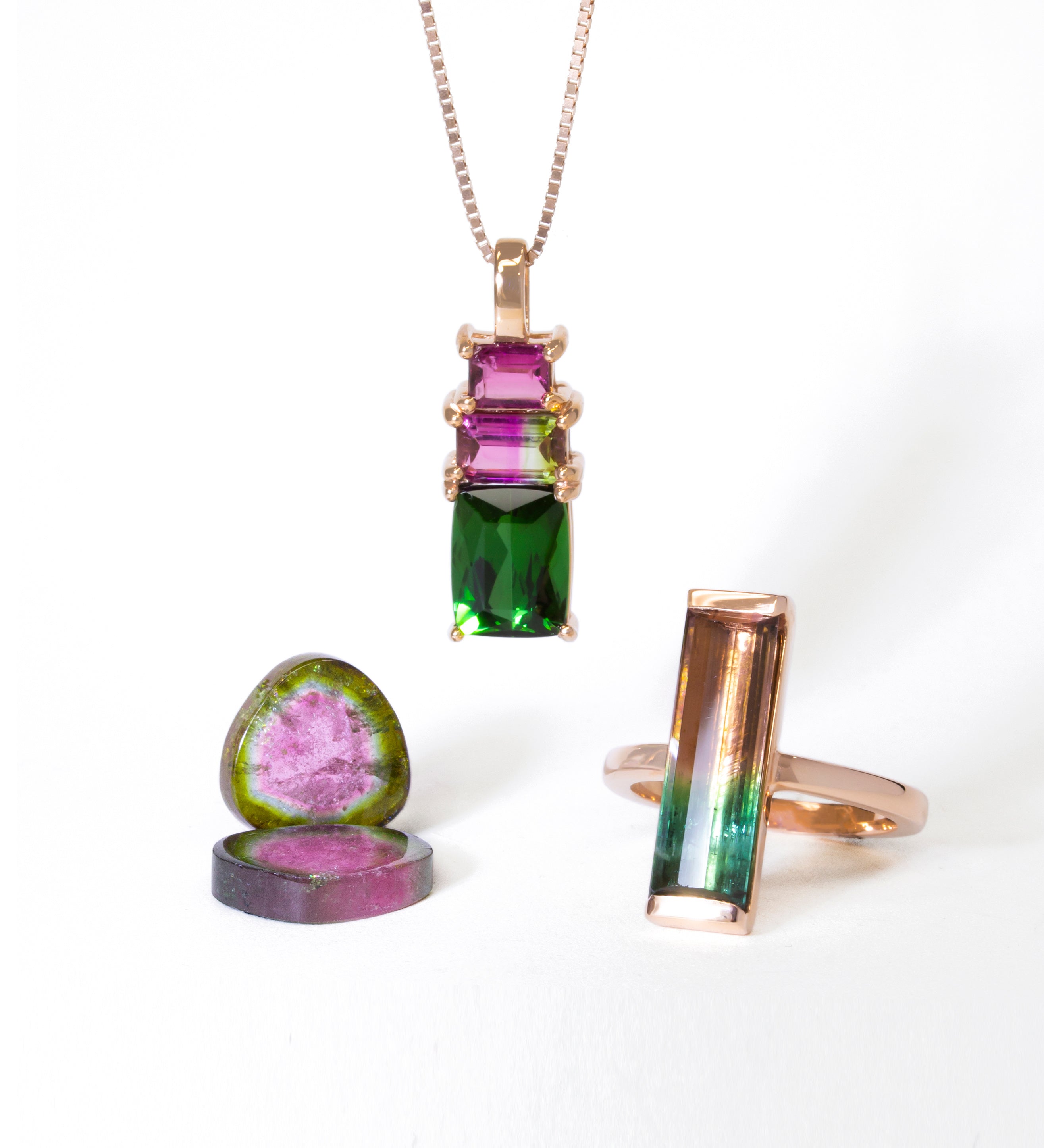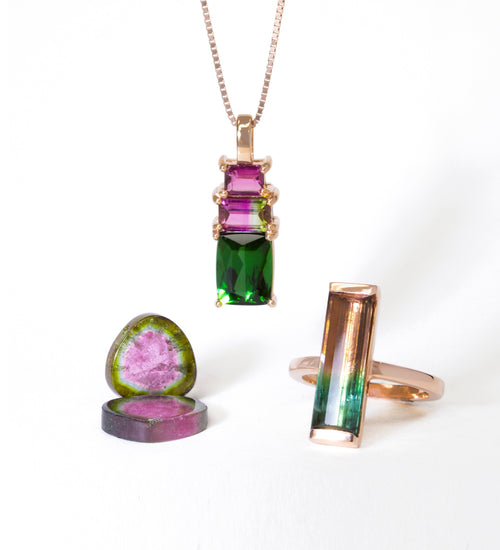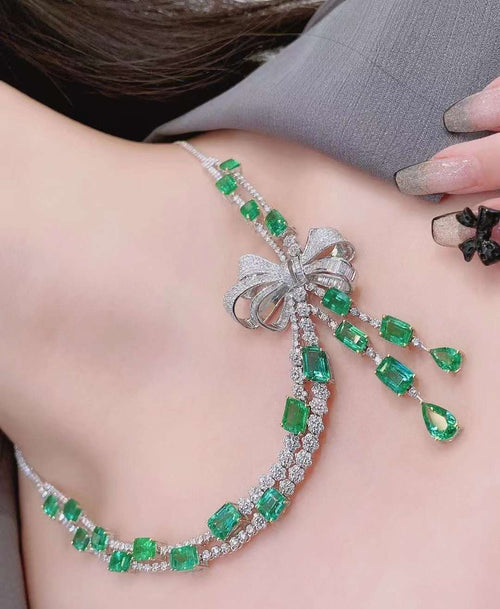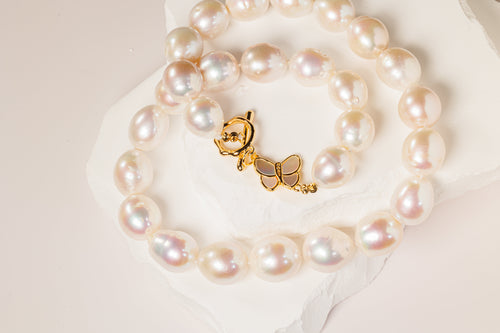Questions about products? Email/call us to schedule a free LIVE session for a custom shopping experience!
Tourmaline is a gemstone unlike any other, celebrated for its astonishing range of colors and unique ability to exhibit multiple hues in a single stone. Known as the "rainbow gemstone," tourmaline has captivated gem enthusiasts, jewelers, and collectors for centuries. Its name, derived from the Sinhalese word "turmali," meaning "mixed stones," perfectly captures its extraordinary variety. In this blog, we'll explore the fascinating world of tourmaline, its colors, properties, and why it remains a beloved choice in jewelry.
A Spectrum of Colors
One of the most remarkable features of tourmaline is its incredible diversity of colors. Tourmaline can be found in nearly every color of the rainbow, from deep reds and vibrant greens to cool blues, soft pinks, and even multi-colored stones. Some of the most popular varieties include:
1. Pink Tourmaline
Pink tourmaline ranges from delicate, pastel pinks to intense, almost red hues. It is associated with love, compassion, and emotional healing, making it a popular choice for romantic jewelry, such as engagement rings and anniversary gifts.
2. Green Tourmaline (Verdelite)
Green tourmaline, also known as verdelite, comes in shades ranging from light olive to deep, emerald green. This variety is often linked to vitality, growth, and a connection to nature. Its rich color and clarity make it a favorite for both modern and vintage-inspired jewelry.
3. Blue Tourmaline (Indicolite)
Blue tourmaline, or indicolite, varies from pale sky blue to deep, almost sapphire-like shades. Blue tourmaline is thought to promote calmness, clarity of thought, and emotional balance. Its striking color and rarity make it highly sought after by collectors.
4. Watermelon Tourmaline
One of the most unique forms of tourmaline is the watermelon tourmaline, which exhibits a beautiful blend of green and pink, resembling a slice of watermelon. This dual-color gemstone is prized for its whimsical appearance and is often used in creative, nature-inspired designs.
5. Black Tourmaline (Schorl)
Black tourmaline, known as schorl, is the most common form of tourmaline. It is revered for its grounding and protective properties, often used in talismans and spiritual jewelry. Its deep, opaque black color offers a striking contrast when set in modern jewelry designs.
The Science Behind the Colors
Tourmaline's wide range of colors is due to the presence of various trace elements within its crystal structure. For instance, the presence of iron, manganese, or chromium can result in green or blue tourmalines, while manganese can also produce pink and red hues. The complex chemistry of tourmaline makes each stone unique, with its own distinct color and properties.
The Durability and Versatility of Tourmaline
Tourmaline is a durable gemstone, ranking 7 to 7.5 on the Mohs scale of hardness, making it suitable for a wide range of jewelry, including rings, earrings, and pendants. Its versatility extends beyond its durability, as tourmaline's vast color range allows it to complement various metals and design styles, from contemporary to classic.
Tourmaline in History and Culture
Tourmaline has a rich history, with many cultures attributing mystical and healing properties to the stone. In ancient Egypt, tourmaline was believed to have traveled along a rainbow as it made its way to the earth, absorbing all the colors along the way. This legend reflects the gemstone's multicolored beauty and its association with balance and harmony.
In modern times, tourmaline is still cherished for its symbolic meanings, including protection, emotional healing, and creativity. It is also the birthstone for October, making it a thoughtful and meaningful gift for those born in this month.
Choosing the Perfect Tourmaline
When selecting a tourmaline, consider the color that resonates most with you. Each color of tourmaline carries its own energy and symbolism, allowing you to choose a stone that reflects your personality or the message you wish to convey. Whether you're drawn to the vibrant greens of verdelite, the calming blues of indicolite, or the playful hues of watermelon tourmaline, there's a tourmaline out there that’s perfect for you.
Conclusion
Tourmaline's extraordinary range of colors and its rich history make it a truly unique and versatile gemstone. Whether you're looking for a statement piece that showcases its multicolored beauty or a more subtle, single-color gem, tourmaline offers something for everyone. Its durability, variety, and symbolic meanings ensure that it remains a beloved choice in jewelry design.
If you're considering adding a tourmaline to your collection, you're not just choosing a gemstone—you're embracing the full spectrum of beauty and meaning that this remarkable stone has to offer.




